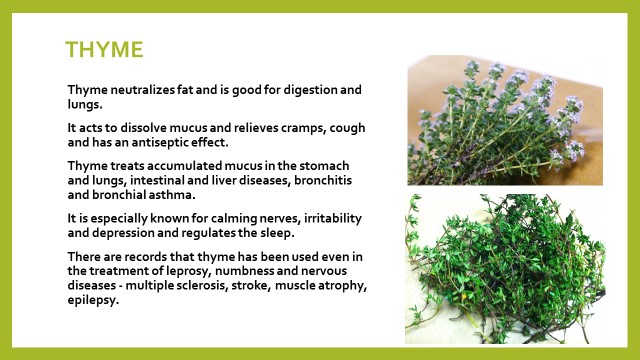If we compare different cultures, we immediately notice that the attitudes toward food, cooking and eating are similar and connected by the same principles. Therefore, when we talk about the principles of the yogic diet, we need to understand that we can find the same roots and great similarities both in the tradition of our grandmothers and in the tradition of the grandmothers in far-away places, including the Rajasthan desert where the Yoga in Daily Life system originated. Surely, you can remember Grandma's unquestionable rule that everything on a plate should be eaten, that food should not be taken from someone else's plate and that bread should not be thrown away. All of these are part of the yogic attitude toward food, which is respect for what creates our energy, health, mood and future.
How can we again make food a source of health and immunity and not a cause of illness?
Simple: prepare various, healthy, organically grown food, use spices and herbs and cook in a good mood. Why is it said that no single dish can replace a mother’s meal? The reason is precisely that a mother always cooks with love for her children, and the main ingredient of that dish is the good energy of the cook. You know, when you eat something in a bad atmosphere, cooked in nervousness, you can tell "it feels like a stone in the stomach." Cook with love for those you cook for, don’t listen to the news while cooking, don’t type on your cell phone--and then the meal will be a source of health.
According to yoga, a vegetarian or vegan diet is the most basic advice, for ethical reasons but also as a basis for good health. If you eat meat now, don’t give it up right away. You can certainly introduce, for example, one meatless day a week, a day of healthy food. This initiative has been known in the world for a long time and is called "Green Monday." In this way, you will give your body at least one day off from meat and hormones, antibiotics, indigestion and all the toxins we sometimes consume.
In yoga, we divide food into three qualities. Sattvic food is the one that gives us energy, lightness and freshness of thoughts. Rajas food (highly spicy food) represents activity and restlessness. Tamas, the worst quality, gives us lethargy, laziness and weight. All processed foods, long-standing foods and meat have tamastic qualities, so they should be avoided, and fresh food from organic farming should be eaten as much as possible.
Spices and herbs are medicinal plants that we often take to improve immunity in the form of drops, tablets or various preparations. In addition to prevention of disease, they also serve to treat and alleviate various symptoms of disease. We could dedicate pages and pages of text to spices, but here we will start practically, with a few spices that we all know and use, which during the COVID-19 epidemic will definitely benefit us.
Recipe 1: Thyme tea
Thyme has always been known for its beneficial effects on the lungs. It helps with asthma, difficulty breathing, and coughing and also calms the nerves. It will enrich all dishes with taste and is also beneficial for digestion.
Make it a habit to drink thyme tea in the evening, which you lightly sweetened with honey and added lemon. If it suits you, put ginger juice in the tea. Make ginger juice by grating fresh ginger, putting it in a hand and squeezing the juice. You can also add thyme and ginger juice to lemonade.
If you don’t like teas, use fresh or dried thyme when cooking salsa and tomato soup or as an addition to bean salads, potato salads or any other salad or stew.

Recipe 2: Homemade pesto recipe with basil
Basil is good for lung problems, helps with angina and migraines, calms nerves, and removes restlessness, gloomy thoughts and insomnia. The vegetable markets are rich in basil, and you can grow it yourself in a jar by the window. Another ingredient, garlic, has antibacterial and antiviral effects. Homemade pesto is very simple. Chop in a mixer a bunch of basil leaves with sea salt, olive oil, a couple of cloves of garlic and a handful of roasted almonds or pine nuts. You can add grated hard cheese to the pesto. It makes a quick and healthy meal when integrated with spaghetti, and you can combine it with other dishes.

An interesting variant is walnut and parsley pesto, made in the same way. Parsley releases accumulated water in the body and is an excellent source of vitamin C, and walnuts are rich in healthy fats.

Simply and easily, without much effort and knowledge, we can make food a source of energy and health. Cook for yourself and your loved ones. Forget about processed foods. Sometimes just 20 minutes is enough for a good meal.
Good digestion is an important prerequisite for good immunity and health, and yoga helps us to achieve it.
There are exercises such as Agnisar Kriya to improve your digestion. Here is a much simpler technique: after a meal, kneel on the floor and sit on your feet. Place your hands lightly on your thighs. Stay in position for a few minutes or as long as you feel comfortable. This position (asana) in yoga is called Vajrasana.
In the following article, we will deal with more Asanas--exercises for better immunity.
Sadhvi Anand Puri
Yoga in Daily Life - Croatia
091/505 2255
www.yoga-in-daily-life.hr
This email address is being protected from spambots. You need JavaScript enabled to view it.

